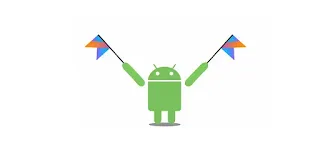41. Kotlin Fundamentals for Android - Dynamic receiver registration
🎯 Kotlin Fundamentals for Android: Dynamic Receiver Registration
Hello, Kotlin and Android developers! Today we'll dive deep into a powerful technique of dynamic receiver registration in Android development using Kotlin. This comprehensive guide will help you understand how to implement flexible event handling and communication mechanisms in your applications.
📌 Understanding Receiver Registration
In Android development, dynamic receiver registration allows you to programmatically register and unregister broadcast receivers during runtime. This approach provides more flexibility compared to static declaration in the AndroidManifest.xml.
🔍 Key Concepts of Dynamic Receiver Registration
- Runtime-based receiver management
- Context-dependent registration
- Flexible event handling
- Resource optimization
💻 Basic Implementation Example
class NetworkBroadcastReceiver : BroadcastReceiver() {
override fun onReceive(context: Context, intent: Intent) {
when (intent.action) {
ConnectivityManager.CONNECTIVITY_ACTION -> {
// Handle network connectivity changes
val isConnected = checkNetworkConnection(context)
// Perform actions based on connectivity status
}
}
}
}
class MainActivity : AppCompatActivity() {
private lateinit var networkReceiver: NetworkBroadcastReceiver
override fun onCreate(savedInstanceState: Bundle?) {
super.onCreate(savedInstanceState)
networkReceiver = NetworkBroadcastReceiver()
registerNetworkReceiver()
}
private fun registerNetworkReceiver() {
val filter = IntentFilter(ConnectivityManager.CONNECTIVITY_ACTION)
registerReceiver(networkReceiver, filter)
}
override fun onDestroy() {
super.onDestroy()
unregisterReceiver(networkReceiver)
}
}
🚀 Advanced Receiver Registration Techniques
Modern Android development encourages using more advanced techniques like LiveData and coroutines for handling system events more efficiently.
class ConnectivityManager(context: Context) {
private val connectivityLiveData = MutableLiveData()
fun observeNetworkState(): LiveData {
val networkRequest = NetworkRequest.Builder()
.addCapability(NetworkCapabilities.NET_CAPABILITY_INTERNET)
.build()
connectivityManager.registerNetworkCallback(
networkRequest,
object : ConnectivityManager.NetworkCallback() {
override fun onAvailable(network: Network) {
connectivityLiveData.postValue(true)
}
override fun onLost(network: Network) {
connectivityLiveData.postValue(false)
}
}
)
return connectivityLiveData
}
}
🏋️ Practical Challenges
- Implement a battery-level broadcast receiver
- Create a dynamic location update receiver
- Develop a custom intent filter for app-specific events
- Build a foreground service with dynamic receiver
- Implement a system settings change listener
📋 Best Practices
- Use context-aware registration
- Minimize receiver complexity
- Handle potential exceptions
- Prefer modern alternatives like LiveData
📱 Stay Updated with Android Tips!
Join our Telegram channel for exclusive content, useful tips, and the latest Android updates!
👉 Join Our Telegram ChannelGet daily updates and be part of our growing Android community!


Comments
Post a Comment